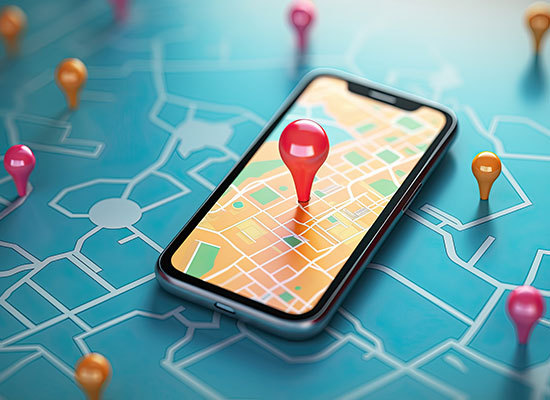 Contact
About Us
Articles
Home
Contact
About Us
Articles
Home

Technology has revolutionized the way we live, work and play. But it has also had a profound impact on the way we care for loved ones.
The use of technology in caregiving is known as assistive technology, and it refers to anything that helps seniors live independently. This can include simple devices like canes and walkers, to more complex systems like home automation and GPS tracking.
There are many benefits to using assistive technology, both for caregivers and seniors. Perhaps the most obvious benefit is that it can help seniors stay safe and independent. For example, a GPS tracker can help caregivers keep track of a senior loved one who may wander off. And home automation can help seniors with tasks like turning on the lights or getting the newspaper.
In addition to safety, assistive technology can also help reduce caregiver stress. For instance, devices that automate medication reminders can help make sure seniors take their medications on time. This can take a big load off of caregivers who may otherwise have to constantly remind their loved ones to take their pills.
Another big benefit of using technology in caregiving is that it can help keep seniors connected to the outside world. This is especially important for seniors who may be isolated due to a disability or condition like Alzheimer's disease. There are now many devices and apps that seniors can use to stay in touch with family and friends. This can help reduce feelings of loneliness and isolation.
Overall, there are many benefits to using assistive technology in caregiving. It can help keep seniors safe, reduce caregiver stress, and keep seniors connected to the outside world. If you are a caregiver, consider incorporating some assistive technology into your caregiving routine.

Technology has always been a great way to help enhance safety. With the ever-growing capabilities of technology, there are more ways than ever to help keep people safe. Here are some examples of how technology can be used to help enhance safety:
In a world that is increasingly driven by technology, it is important to find ways to encourage social interaction. This can be done in a number of ways, but one of the most effective is to use technology to facilitate social interaction.
There are a number of ways to do this, but one of the most obvious is to use social media. Social media platforms like Facebook and Twitter are perfect for facilitating social interaction. They allow users to connect with each other, share information and experiences, and stay updated with what is going on in the world.
Another way to encourage social interaction is to use technology to bring people together. There are a number of websites and apps that are designed to help people meet up with each other. Meetup.com is a great example of this, as it helps people find groups of like-minded people in their area so they can meet up and socialize.
Finally, another way to encourage social interaction is to use technology to make it easier for people to connect with each other. There are a number of mobile apps that allow people to share their location with friends and family so they can easily meet up. WhatsApp is a great example of this, as it allows users to share their location with ease.
Technology can be a great way to encourage social interaction. However, it is important to use it in moderation and to make sure that you are still getting out and meeting people in person. Nothing can replace face-to-face interaction.
Technology can help support activities and cognitive stimulation for people with dementia in a number of ways. For example, tablets and smartphones can be used to provide access to a range of apps and communication tools which can help to keep the mind active and engaged. There are also a number of specialist products available which have been designed specifically to support people with dementia.
Some apps and communication tools that can be used to support activities and cognitive stimulation include:
Meanwhile, several specialist products have been designed specifically to support people with dementia. They include:
Technology can be a great way to support activities and cognitive stimulation for people with dementia. There are a wide range of apps and communication tools available that can be used to keep the mind active and engaged, and there are also a number of specialist products available that have been designed specifically to support people with dementia.

It can be difficult to find the time to care for an elderly or disabled loved one. Luckily, there are a number of ways to connect with professional caregivers through technology.
There are several online services that connect families with professional caregivers. These services allow you to search for caregivers based on location, availability and skills. You can also read reviews from other families who have used the service.
Many professional caregivers also use social media to connect with families and share information. LinkedIn is a great platform for connecting with caregivers, as it allows you to see their professional credentials and recommendations. Facebook and X, formerly known as Twitter, are also good platforms for following caregivers and learning about their work.
In addition to online services and social media, there are also a number of apps that can connect you with professional caregivers. CareZone is an app that allows you to manage medications, appointments and other information for your loved one. There is also a caregiver locator feature that can help you find caregivers in your area.
Technology can be a great way to connect with professional caregivers and make sure that your loved one is getting the care they need. With a little bit of research, you can find the perfect caregiver for your family.
The internet has a lot of great things to offer when it comes to technology and how it can help you in your daily life. There are many ways that you can use technology to streamline your daily care routine so that you can save time and hassle.
For instance, there are many online tools that can help you keep track of your daily tasks and appointments. There are also online organizers that can help you keep track of your daily schedule and make sure that you are getting everything done that you need to.
Another great way to use technology to streamline your daily care routine is to use online resources to find new recipes and meal ideas. There are many websites and blogs that offer great ideas for quick and easy meals that you can make at home. You can also find many healthy recipe options online if you are looking for ways to eat better.
Finally, technology can also help you stay on top of your fitness routine. There are many apps and websites that offer workout programs and tracking tools. These can be great resources for helping you stay motivated and on track with your fitness goals.
By taking advantage of all these great technological resources, you can easily streamline your daily care routine and make your life a lot simpler.
Wearable technology is becoming increasingly popular, and its potential uses are growing as well. One area where wearable technology can be particularly useful is in caregiving.

There are a variety of ways that wearable technology can be used to support caregivers. For example, wearable devices can help to monitor the health of both the caregiver and the person they are caring for. This can include tracking vital signs, activity level and sleep quality. Wearable devices can also provide reminders for medication schedules or appointments.
In addition to health tracking, wearable technology can also be used to improve communication between caregivers and other members of the care team. For example, a wearable device can be used to send an alert to a doctor or nurse if the caregiver needs assistance. The device can also be used to share information about the person being cared for, such as their current condition or changes in their condition.
Wearable technology can also be used to provide support and assistance to caregivers in their everyday activities. For example, there are wearable devices that can provide reminders for tasks that need to be completed, such as taking a shower or eating a meal. There are also wearable devices that can help with locational awareness, such as reminding the caregiver to stay within a certain area or providing turn-by-turn directions to a destination.
The use of wearable technology in caregiving is still in its early stages, but the potential benefits are clear. Wearable devices have the potential to improve the health of both caregivers and those they are caring for, as well as to improve communication and support caregivers in their everyday activities.
Technology is rapidly transforming the caregiving landscape, providing new and innovative ways to support both caregivers and seniors. Whether it's enhancing safety, encouraging social interaction, stimulating cognitive function or connecting with professional caregivers, technology has the potential to make a significant impact on the lives of those involved in caregiving.
As technology continues to evolve, we can expect to see even more innovative and groundbreaking solutions emerge. It is important for caregivers to stay informed about the latest technological developments and to explore how these technologies can benefit their own caregiving journey.
Here are some key takeaways we’ve discussed:
Caregivers who embrace technology have the opportunity to improve the quality of life for themselves and the seniors they care for. By exploring the various ways in which technology can be used to support caregiving, caregivers can create a more seamless, efficient and rewarding caregiving experience.
Alliance America is an insurance and financial services company dedicated to the art of personal financial planning. Our financial professionals can assist you in maximizing your retirement resources and achieving your future goals. We have access to an array of products and services, all focused on helping you enjoy the retirement lifestyle you want and deserve. You can request a no-cost, no-obligation consultation by calling (833) 219-6884 today.


